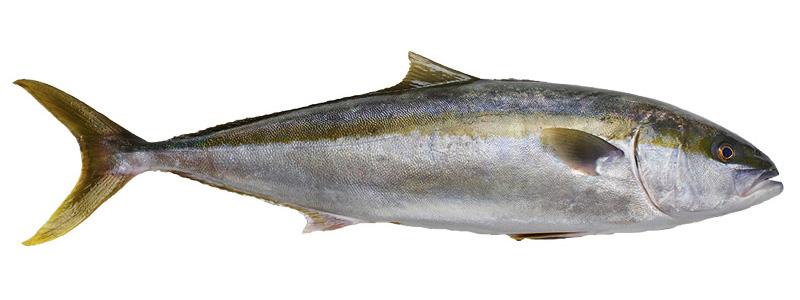
| Scale (tonnes) | 1000 |
| Investment ($ millions) | $15.6 |
| 10 YR NPV - 14% discount rate ($ millions) | $(3.9) |
Kingfish (Seriola lalandi) is part of the Carangidae family of jacks and yellowtails and has a circum-global distribution in warm to tropical waters of the Pacific and Indian oceans and.
In New Zealand kingfish are present in waters in the upper North Island of New Zealand all year and venture to the waters surrounding the upper South Island during the warmer summer months.
Commercial kingfish aquaculture has been undertaken in Australia since the early 2000s, predominantly through Clean Seas Aquaculture, who raise hatchery produced fingerlings in sea cages off the South Australian coast. Farmed kingfish grow quickly in captivity, reaching 3-4 kg in 18 months. Disease outbreaks have caused significant challenges to production although these challenges are being met. Recently, Chilean fish farmers have begun pilot production of Kingfish in onshore and RAS systems and Silt in Denmark have undertaken culture of Kingfish in RAS. Both the Chilean and Australian companies are developing selective breeding programmes for Kingfish.
Substantial commercial production already exists for related yellowtail species, Seriola quinqueradiata , and greater amberjack, Seriola dumerili, in Japan. Production in Japan is largely reliant on on-growing of wild caught juveniles. Farmed S. lalandi has primarily sold to the Japanese restaurant market for consumption as sashimi. The export price for kingfish from Australia has increased steadily in recent years and currently (Feb 2013) sits at around NZD$15.50 / kg.
Kingfish Aquaculture research in New Zealand commenced around 2000. Although relatively easy to produce in the hatchery, industry uptake has been slow to develop. One onshore facility failed to reach its planned production levels, largely due to inappropriate system design, and a small cage farm operation in the Marlborough sounds suffered significant losses through equipment failure. NIWA cage farming trials at Mahanga Bay in Wellington Harbour, indicated that growth rates were significantly reduced and mortalities occurred once water temperatures fell below 15oC.
Difficulties in obtaining consents for new marine farming space between 2002 and 2011 hampered development of cage farms for this species in the upper North Island where water temperatures would be more favourable for cage production.
Studies have shown that under optimal conditions Kingfish can grow quickly, reaching 2 kg in 12 months and up to 6 kg in 2 years. FCR’s vary between 1.2 and 1.8 depending on temperatures and culture systems. In cages the fish is highly susceptible to gill parasites, viral and bacterial diseases but these may be less likely to occur and better able to be managed within a well-run RAS.
Hatchery reared juveniles are available in New Zealand from NIWA, who are also running a selective breeding programme for this species.
 Kingfish (S. quinqueradiata) farming in Japan
Kingfish (S. quinqueradiata) farming in Japan
 First attempts to farm kingfish in the Marlborough Sounds (2006).
First attempts to farm kingfish in the Marlborough Sounds (2006).
 Land based kingfish farm in Chile based on AKVA RAS technology
Land based kingfish farm in Chile based on AKVA RAS technology
Seriola lalandi has been established as a suitable candidate for marine aquaculture. In contrast to the culture of S. quinqueradiata (which has been cultured extensively in Japan), juveniles of S. lalandi are not easily available from the wild, and juveniles must be produced in hatcheries from captive breeding stock.
The following generic model simulates the production of kingfish in an intensive RAS system. The assumptions entered in the model are based on the best information available to NPFL at the time. They will give a general picture of the likely economics and financial viability with this species.
The key outputs from the 10 year generic Kingfish model are:
Based on your specific location, RAS system design and performance specified by the supplier the assumptions may need to be altered for your particular situation. Additionally you may wish to manage production differently i.e. grow the fish to a larger size before sale.
NPFL strongly advise that you seek advice from experts in setting up your own assumptions for your model runs.
Ph 09 432 5516
[email protected]
Ph 09 375 2035
[email protected]